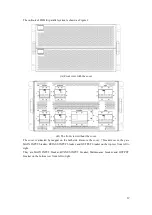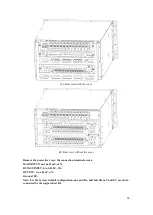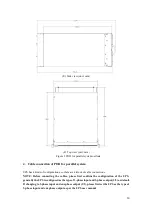
44
5 Maintenance
This chapter introduces UPS maintenance, including the maintenance instructions of power
module and monitoring bypass module and the replacement method of dust filter.
5.1 Precautions
Only maintaining engineers can maintain the power module and monitoring bypass module.
1) The power module should be disassembled from top to bottom, so as to prevent any inclination
from high gravity center of the cabinet.
2) To ensure the safety before maintaining power module and bypass module, use a multi-meter to
measure the voltage between operating parts and the earth to ensure the voltage is lower than
hazardous voltage, i.e. DC voltage is lower than 60Vdc, and AC maximum voltage is lower than
42.4 Vac.
3) Bypass module is not recommended to hot swap; only when UPS is in Manual Bypass Mode or
UPS is completely powered off, the bypass module can be disassembled.
4) Wait 10 minutes before opening the cover of the power module or the bypass after pulling out
from the cabinet.
5.2 Instruction for maintaining UPS
For the maintenance of the UPS, please refer to Chapter 4.3.4 to transfer to
maintenance bypass mode. After maintenance, re-transfer to normal mode according
to Chapter 4.3.5.
5.3. Instruction for Maintaining Battery String
For the Lead-Acid maintenance free battery, when maintaining the battery according to
requirements, battery life can be prolonged. The battery life is mainly determined by the following
factors:
1) Installation. The battery should be placed in dry and cool place with good ventilation. Avoid
direct sunlight and keep away from heat source. When installing, ensure the correct connection to
the batteries with same specification.
2) Temperature.The most suitable storage temperature is 20
℃
to 25
℃
.
3) Charging/discharging current. The best charging current for the lead-acid battery is 0.1C. The
maximum charging current for the battery can be 0.2C. The discharging current should be 0.05C-
3C.
4) Charging voltage. In most of the time, the battery is in standby state. When the utility is normal,
the system will charge the battery in boost mode (constant voltage with maximum limited) to full
and then transfers to the state of float charge.
5) Discharge depth. Avoiding deep discharge, which will greatly reduce the life time of the battery.
















































